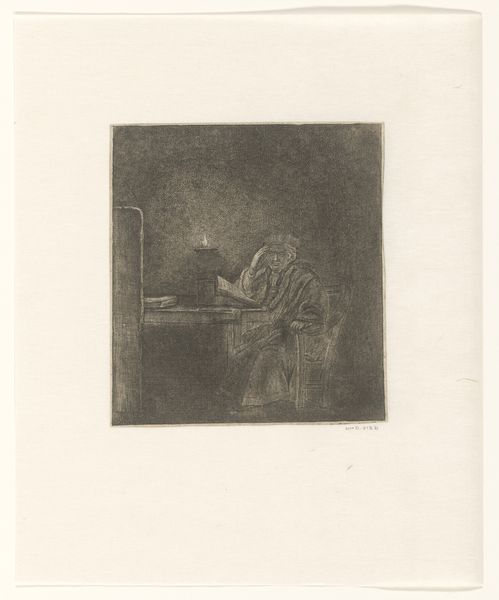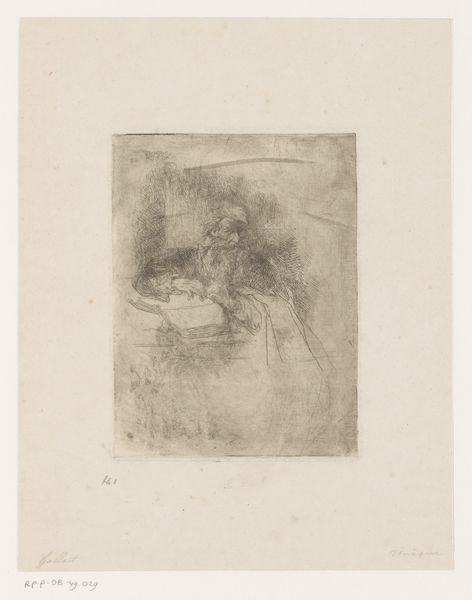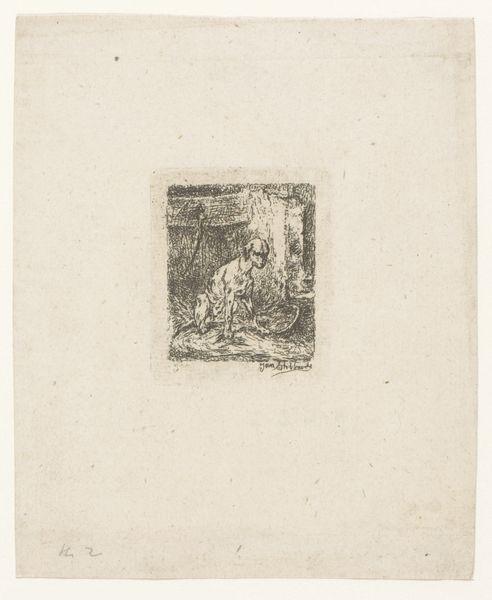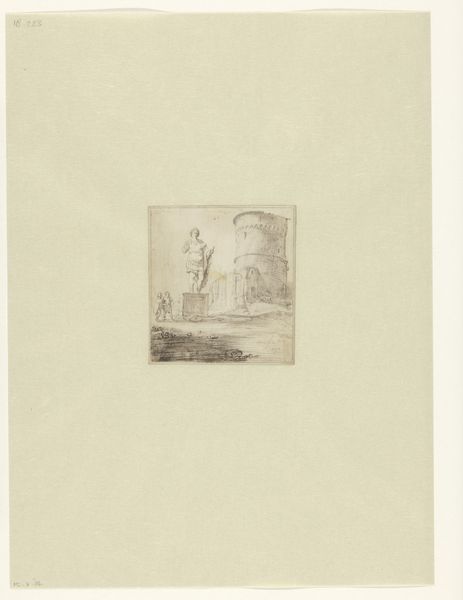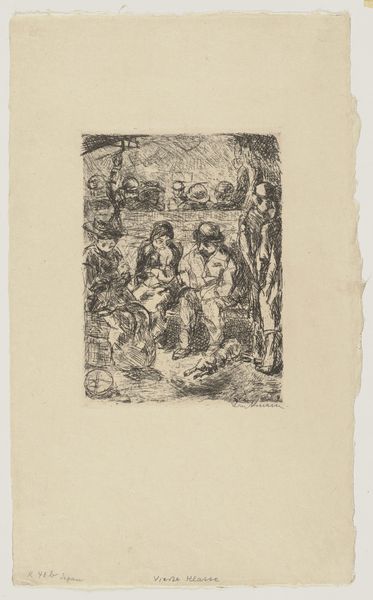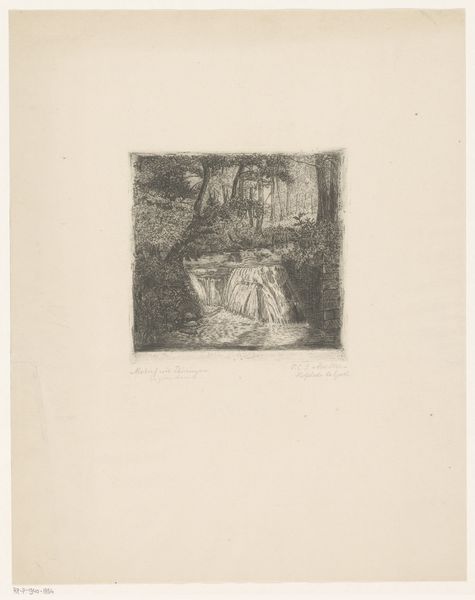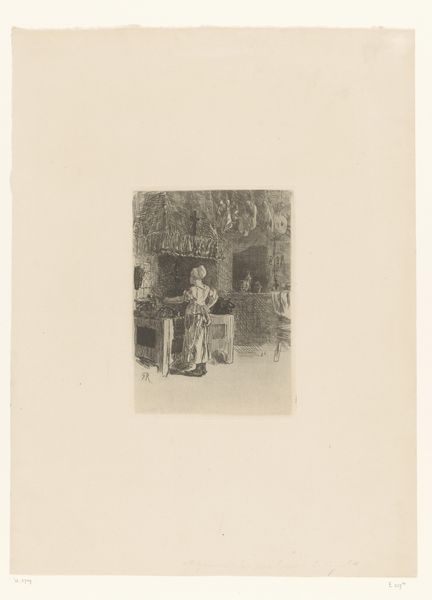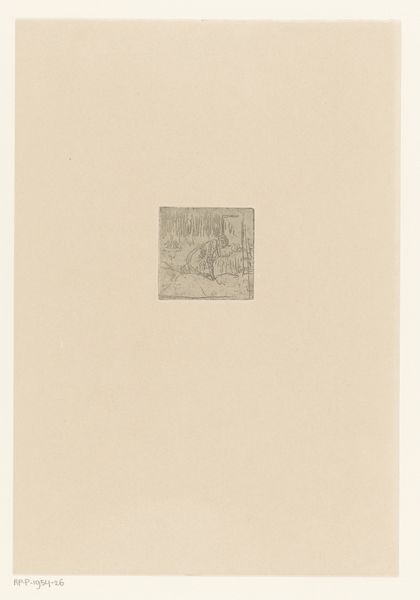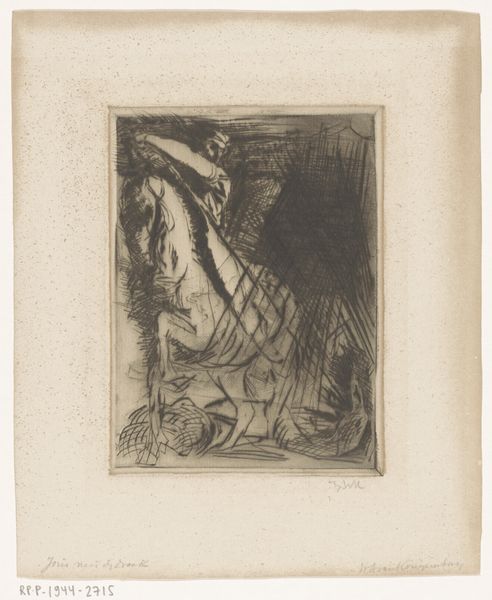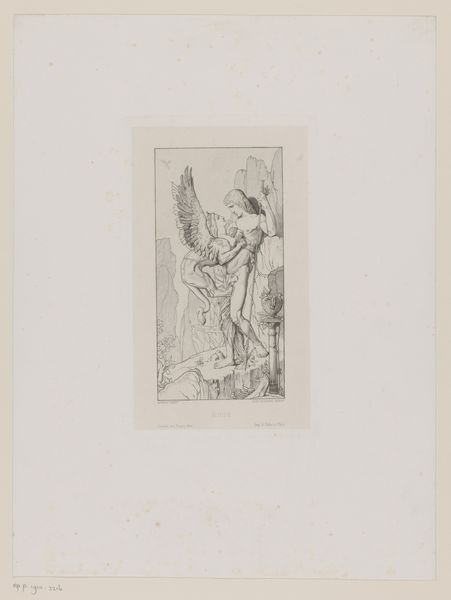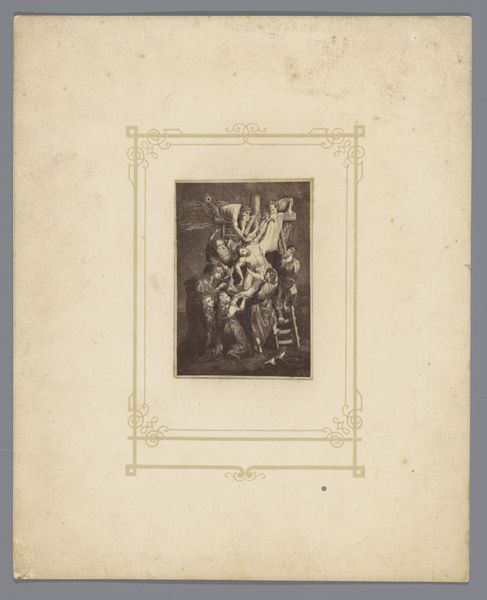
drawing, print, etching
#
portrait
#
drawing
#
16_19th-century
# print
#
etching
#
realism
Dimensions: height 172 mm, width 165 mm
Copyright: Rijks Museum: Open Domain
This etching of an unknown bearded man was made by Willem Linnig II in the late nineteenth century. The artist would have covered a metal plate with a waxy, acid-resistant substance, then scratched an image into it with a sharp needle, exposing the metal underneath. The plate was then immersed in acid, which bit into the exposed lines, creating grooves. The plate was then inked, and the surface wiped clean, leaving ink only in the etched lines. Finally, the plate was pressed onto paper, transferring the image. Look closely, and you can see the texture of the lines, and how they create a sense of light and shadow. The quality of the impression depended on many factors - the strength of the acid, the pressure of the press, the absorbency of the paper, and the skill of the printer. The etching process allowed artists to create multiple copies of their work, making art more accessible and contributing to a burgeoning art market. In this way, the traditional techniques of etching were directly tied to the wider social issues of labor, politics, and consumption.
Comments
No comments
Be the first to comment and join the conversation on the ultimate creative platform.

